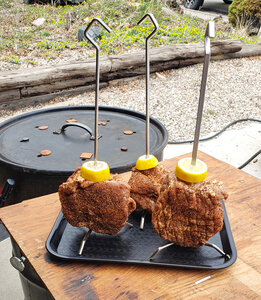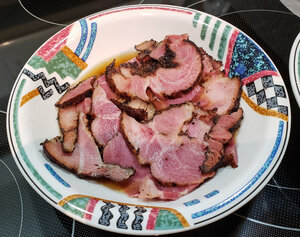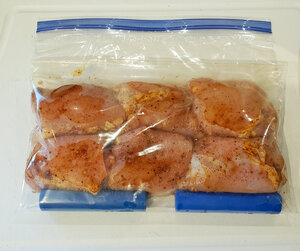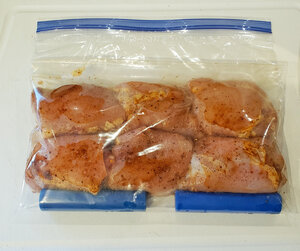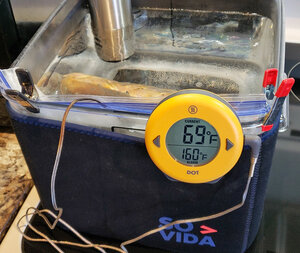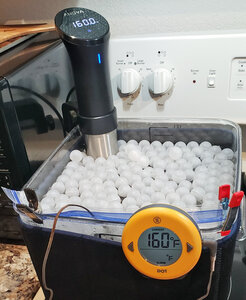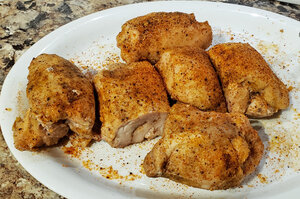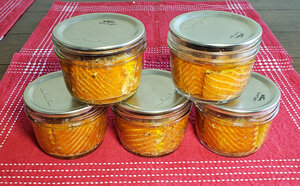Following two cycles of cold smoking, I take my IT just over 145° when I use pork loin, and around 160° on a shoulder picnic or shoulder butt. We do eat a lot as-is like on a sandwich, or in a Chef's salad, but I also like a hot ham & cheese sandwich or wrap, and usually do warm it up for breakfast. My intent is not to cook it further....If you pasteurized it at 135 for a few hours, there no need for it to see a frying pan...
I eat them as-is...
But, It can take time for folks to eat very rare pork... and get used to it's texture... Took me awhile... Quite awhile...
Growing up in the 50's, mom burned most meat because trich was still a problem...
What device are you using to maintain the 'few hours' at 135° pasteurization temps?
EDIT - I located this post below of yours from 2020. Have you revised the 'hour-ish' timeline to 'several hours' to insure pasteurization? I have two loin hams curing right now, I might experiment with the 135° using sous vide.
Smoke the ham and take to 135F in the smoker and hold for an hour ish by lowering the smoker temp to ~150F and closing down the exhaust to stop evaporative cooling effect... OR wrap it and place in your oven at it's lowest temperature so as to not overcook and dry out the meat ..
If you plan to pasteurize in the sous-vide, if you take the IT of the ham to 135F ish and hold it there for an hour, then slice into serving portions and vac-pack, and stick it in the sous-vide for an hour + at 135F ish, then cool in 50% ice water and start another batch of ham in the sous vide, repeat,......
The ham will be good in the refer for nearly 90 days if it is stored below 36.5F ..
The repeat temp and time in the sous vide is because you have contaminated the meat by handling, slicing, putting in bags etc.... Once in the vac-bag and pasteurized, you are golden...
Last edited:


